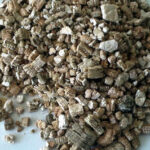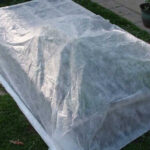If you’re familiar with indoor grow lights and their development over the years, you know that there’s a lot of hot air and competition in the industry. LED vs. HPS, CFL vs. MH…it seems the debate will never end.
But there’s a new player in the grow light industry…plasma grow lights. Even these lights are subject to debate in the industry, with one said claiming they will light the way (pun intended) to the next growing revolution, and others saying that they’re a complete waste of money.
To find out the truth, let’s dive into what plasma grow lights are, how they work, and whether they’re a good choice for your indoor garden.
This is a long post, so if you just want a recommendation on the best plasma grow lights, check these two out. The Gavita Pro 1000 DE is my personal pick. I removed the Rocket light and the Gavita 3000 LEP due to poor quality.
Top Pick: Gavita Pro 1000 DE
Also Reviewed in this Article:
- Alphalite Plasma Grow Light
What are Plasma Grow Lights?
Plasma lights are a new type of grow light that boasts a full spectrum, unlike many other types of lights on the market right now. Like many new grow light technologies, manufacturers are quick to claim that their lights boast a full spectrum, but it’s only recently that those promises have been fulfilled.
They came onto the market at upwards of $2,500, meaning most people couldn’t afford them until the price came down recently. They work by using Light Emitting Plasma (LEP) bulbs, which seek to mimic the spectral output of the sun. They’re a solid-state light source, meaning they do not have an electrode.
Most growers are experimenting with plasma grow lights and also supplementing with additional LED lighting, but there’s nothing stopping you from going full plasma in your grow room…as long as you’re willing to invest the money.
How do Plasma Grow Lights Work?
It’s time to get technical. By using electromagnetic induction, plasma grow lights are able to emit light without using filaments or electrodes. To do this, they use a special type of bulb called a light emitting plasma (LEP) bulb.
LEP bulbs are exceptionally unique in their function. They contain a gas that, when heated via the electromagnetic field generated by a power source, emits light that is very similar to the light emitted by our Sun. The temperature of the gas inside the bulb is 6,000K, while the surface of the Sun is 5,777K — almost identical.
Check out this video profiling Luxim, a manufacturer of LEP bulbs. It explains the technology well:
Benefits to Plasma Grow Lights
There are a lot of benefits to switching to plasma grow lights instead of HPS, LEDs, HID, CFL, or (gasp) incandescent lights. Let’s take a look at some of the most obvious ones that might sway your decision to switch to plasma lights.
Broader Spectrum of Light
If you’re familiar with indoor lights, you know that choosing lights that emit the spectrum that your plants need is a part of the buying decision. Many people have switched over the LED grow lights for this reason, as they allow a more precise customization of the spectrum of light emitted.
A plasma grow light will emit pretty darn close to the full spectrum of light (~5500k) that your plants need to thrive. What this means for your garden is that you will not need to swap out lights or bulbs as your plants mature from their vegetative state to their flowering state. This means you have to buy less lights in general, and there’s less effort for you in the garden.
Uses Less Energy
As I’m sure you’re aware, it can get expensive to run grow lights…and we haven’t even talked about the other costs of running an indoor garden!
By using plasma grow lights, you’ll be using about 50% as much energy as HID lamps, which are some of the most common in use in most indoor gardens. This translates to a 50% reduction in your energy bill without a huge loss in light output.
Longer Lifespan
Because LEP bulbs emit light without using a filament or electrodes of any kind, they degrade much slower than other types of lighting. A typical LEP bulb has a lifespan of at least 30,000 hours and can last as long as 40,000 hours.
On top of that, the intensity of the light emitted lasts much longer than metal halide or high pressure sodium lights.
Deeper Light Penetration
Light penetration is an important factor to consider when buying any indoor grow light. Plasma lights will penetrate further into your canopy than most T5, LED, or CFL lights. however, they do have less light penetration than HID grow lights, so there is a slight downside there.
Summary of Benefits
- Nearly-complete spectrum of light that is good for vegetative growth (~5500K)
- Use less energy than HID grow lights
- Lack electrodes, so have a longer lifespan (~30,000-40,000 hrs)
- Light emitted penetrates further than most T5, LEDs, and CFL lights
- Light intensity lasts a long time compared to metal halide or high pressure sodium lights
Downsides to Plasma Lights
No lighting technology is without its downsides, and plasma lights are no exception. Here are the main issues that growers have with plasma lights that may make you decide to stay with your current lighting system.
Cost
There’s no way around it — plasma lights are more expensive. Many of the higher-end lights cost over $1,000, which is an insurmountable expense for many growers. However, there have been new entries into the market that are coming it at lower prices. This trend might continue, similar to how LED grow lights got cheaper and cheaper over time.
Heat Output
Because the LEP bulb gets so hot, it will likely require a fan for cooling or at least good venting to make sure you don’t burn your plants and the air temp doesn’t get too high.
Lumens Output
Plasma grow lights actually have a higher lumen per watt than many types of lighting, but they lose out to the standard metal halide and high pressure sodium bulbs here.
New and Less Tested
Because these lights are so new to the market, there isn’t as much information out about them as there is with other types of lighting. 3rd party verification and testing is vital, and when a lot of the information about these lights is coming from the manufacturers themselves, it’s reason to be a little cautious.
Most of these companies are reputable and upstanding, but we saw what happened in the LED lighting industry as everyone raced to claim market share.
Summary of Downsides
- Less light penetration than HID grow lights
- Much more expensive than most other types of lighting, even higher-end LEDs
- The LEP bulb emits a lot of heat and will require a fan for cooling
- Lumens per watt is lower than standard MH or HPS bulbs
- Very new and relatively untested by 3rd parties, most information comes from manufacturers
Plasma vs. LED Lights
LED grow lights have been all the rage for the last few years, especially with hobbyist growers that are looking to minimize their costs without sacrificing a lot of value. There are plenty of reasons to choose a LED light system over other types of lights — plasma included — but there are some situations where plasma is a better choice.
LED lights are far more efficient energy wise than standard HPS or MH lamps. But the sacrifice they make to get there is that they aren’t full-spectrum. Even the most customized LED lights still aren’t outputting a full spectrum of light that’s on par with sunlight.
If you choose plasma over LEDs, you might balk at the cost. But plasma lights are better thought of as an investment that pay themselves back over time with the increased efficiency and light output leading to higher yields for you in the garden.
One final consideration is heat. LED lights are some of the coolest lights out there, so if you don’t want to spend money on a fan or venting system for your plasma lights, you might want to stick with LEDs.
Plasma vs. HPS Lights
There’s no way around it — HPS lights are the industry standard for most indoor growers. They hold a fond place in the hearts of many people, myself included. Many HPS growers are hesitant to switch to newer lighting technology, whether it’s due to tradition or simply doubts that the new tech will perform as well.
Like plasma lights, HPS lights do offer a full spectrum of light…there’s no denying that. And when it comes to lumens per watt, HPS bulbs do very well. On top of that, they’re quite cheap.
So, why would you ever switch?
Two reasons: energy efficiency and wasted light. HPS bulbs use a lot of energy to run compared to LEP bulbs, making plasma a cheaper option once the initial cost of plasma lights is “earned back.” Plasma also puts out a full spectrum of light, so you’re not missing out on anything there.
Plasma vs. Compact Fluorescent Lights
Hobbyist growers and people who want to save on money have flocked to fluorescent grow lights for years. They’re cheap, easy to use, and can cover a lot of space. Some of the most common setups are the T5 arrays used for propagation and vegetative-only plants like microgreens or salad greens.
Fluorescent lights are also cooler than HPS lights, but not as cool as LED lights. So for confined spaces, fluorescent are often a good choice. However, plasma lights end up cooler when you consider that only the bulb gets really hot, but that heat isn’t dispersed into the canopy of your plants very well. This means you can place them even closer, getting the most of the light emitted from a plasma grow light.
As far as light coverage, you’ll get good coverage from fluorescent, but most plasma setups can light a 4′ by 4′ space as well, which is pretty good.
Finally, the cost will be far less for fluorescent, so you must factor that in. The bottom line is this: if cost is your primary concern, you should probably stick with fluorescent lights.
So, Should You Use Plasma Lights?
We’ve already established that they cost a bit more than the standard lighting setup – that’s true. However, there are a few that have come out recently at lower prices. The Gavita Pro 1000 DE and the Alphalite are two such models (profiled later in this article).
What you have to realize when making this decision is that these lights last much longer, emit a full spectrum, and oftentimes perform equally at a lower wattage when compared to HID, MH, or HPS lighting.
It can be argued that plasma lights are the best of the LED world combined with the best of the HID world. They have some of the efficiencies of LED lighting without sacrificing as much of the lighting spectrum or intensity of light.
Before You Buy…
As we’ve already established, these are pricier lights and a larger investment in your garden. Before you pull the trigger, ask yourself the following questions and answer them as accurately as possible. They’ll help you narrow down the best plasma grow light for you.
Your Growing Space
Map out the area of your grow room that you’ll actually be growing in. Plasma lights have good coverage, especially compared to LED lights, so they can handle most grow room designs. But they favor a square-ish design and around 4′ by 4′ of growing space, although this is dependent on the exact model you purchase.
You should also consider how tall your room is. Plasma lights can be placed fairly close to your plants, so you don’t have to worry too much about burning them. However, they need to be far enough away from your plants to have adequate coverage. If you don’t have a tall enough grow room, you might find yourself under-utilizing the light.
Your Budget
It’s easy to spend money on top of the line plasma grow lights, but you don’t need to break the bank. The costs of plasma lamps are coming down recently, making them more accessible to growers around the world.
When considering your budget, be sure to price in the rest of your grow room and the equipment you need. If you’re sold on plasma lights and can fit the expense into the rest of your budget, you’re good to go!
Best Plasma Grow Lights
There are 20+ popular plasma lights on the market right now. Of those, here are the best two plasma grow lights to consider.
Gavita Pro 1000 DE
Overall, the Gavita Pro 1000 DE is my pick for best plasma grow light.
The Gavita Pro 1000 DE is the “budget” option for plasma lights, coming in at around $450 at the time of this posting. The distinguishing features of this light include the ability to modulate the wattage to the following levels: 600/660/750/825/1150.
What this means is that you can lower your electricity costs even further if you don’t need to take full advantage of the 1150 watts that this lighting system provides.
On top of that, they use a Philips 1000 doubled ended bulb which reduces vibration and shaking, meaning the lamp degrades much slower than other models.
See Prices >
Alphalite
Next we have the Alphalite system, another budget entry coming in at $499. It’s a little more expensive than the Gavita Pro 1000 DE and doesn’t include the wattage modulation, making it a slightly worse pick in my mind.
But if you don’t like the design of the Gavita and prefer something a bit more compact, then the Alphalite is the pick for you. It features every other benefit that the Gavita Pro 1000 DE has and is a bit slimmer.
See Prices >










